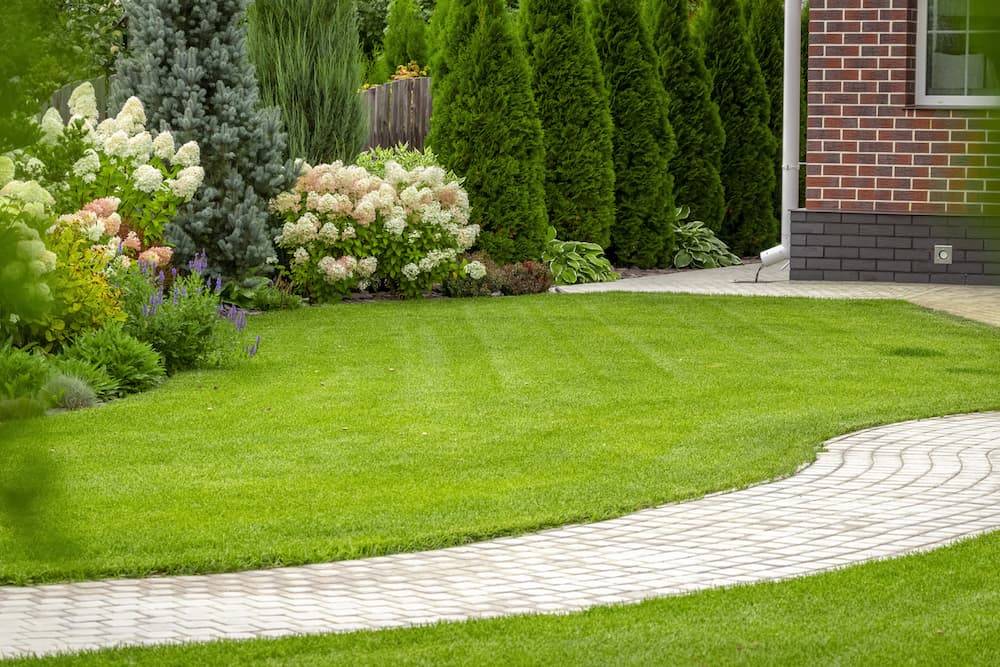
As climate change continues to impact weather patterns and water availability, homeowners and property developers alike are turning to low water landscapes as a sustainable, cost-effective solution. Also known as xeriscaping, low water landscaping emphasizes drought-resistant plants, efficient irrigation, and smart design to create outdoor spaces that are both beautiful and environmentally responsible.
Whether you’re in a drought-prone region or simply looking to reduce your water usage and maintenance costs, low water landscaping offers a smart, stylish alternative to traditional lawns and thirsty garden beds. Here’s everything you need to know to transform your yard into a sustainable oasis.
What is Low Water Landscaping?
Low water landscaping involves designing outdoor spaces that require minimal supplemental water. The concept originated in arid regions like the American Southwest, where water conservation is essential, but it’s gaining popularity across the country due to growing environmental awareness and the rising cost of utilities.
Key components of a low water landscape include:
- Drought-tolerant plants
- Efficient irrigation systems
- Mulching for moisture retention
- Soil improvement
- Thoughtful design and plant grouping
Together, these elements create a landscape that thrives with minimal water input while reducing maintenance and supporting local ecosystems.
Benefits of Low Water Landscapes
1. Water Conservation
The most obvious benefit is reduced water usage. Traditional lawns can require thousands of gallons of water annually, while a low water garden can cut that need by up to 75% or more.
2. Lower Utility Bills
Less water use means lower water bills. Additionally, low water landscapes often require fewer chemical fertilizers and lawn care products, reducing overall maintenance costs.
3. Eco-Friendliness
Low water gardens support biodiversity, attract pollinators like bees and butterflies, and reduce runoff that can carry pollutants into storm drains and waterways.
4. Low Maintenance
Drought-tolerant plants are typically hardier and less prone to pests and disease, meaning fewer hours spent on upkeep.
5. Aesthetic Appeal
Contrary to the misconception that water-wise gardens are plain or barren, low water landscapes can be lush, colorful, and artfully designed with textures, shapes, and vibrant blooms.
Choosing the Right Plants
Selecting the right plants is the cornerstone of a successful low water landscape. Look for native or adaptive species that are naturally suited to your climate and soil.
Popular Drought-Tolerant Plants:
- Succulents (such as agave, sedum, echeveria)
- Lavender – aromatic and hardy
- Yarrow – feathery foliage and colorful flowers
- Russian Sage – silvery leaves and purple blooms
- California Poppy – bright orange flowers and low water needs
- Coneflower – great for pollinators and blooms all summer
- Ornamental Grasses – such as blue fescue or feather reed grass
Incorporating a variety of plant heights, textures, and colors helps create a visually dynamic garden that thrives with minimal water.
Smart Design Strategies
Design is just as important as plant selection in creating an effective low water landscape. Here are some guiding principles:
1. Zoning
Group plants by water needs. Keep the thirstiest plants closest to the house where water runoff can benefit them, and place the most drought-resistant plants farther out.
2. Limit Lawn Space
Grass is one of the biggest water consumers. Consider reducing or eliminating lawn areas altogether. Use artificial turf, ground covers, or gravel for visual interest and functionality.
3. Use Mulch Generously
Mulch helps retain soil moisture, suppress weeds, and improve soil health. Organic mulches (like bark or wood chips) break down over time and enrich the soil.
4. Incorporate Hardscaping
Pathways, patios, stone borders, and decorative rock gardens reduce the amount of irrigated space while adding structure and design appeal.
5. Install Drip Irrigation
A drip irrigation system delivers water directly to plant roots, minimizing evaporation and maximizing efficiency. These systems are easy to automate and ideal for low water landscapes.
Soil Preparation
Healthy soil is key to water efficiency. Before planting, enrich your soil with organic compost and test for drainage. Amending poor-quality soil can improve water retention and nutrient availability, helping your plants establish strong root systems.
Maintenance Tips
Even the most drought-tolerant landscape needs occasional care. Here’s how to keep it looking its best:
- Weed Regularly: Weeds steal water from your plants.
- Prune and Deadhead: Encourage healthy growth and prolong blooming.
- Inspect Irrigation Systems: Check for leaks or clogged emitters.
- Refresh Mulch: Add mulch annually to maintain a healthy layer.
- Water Wisely: Water deeply and infrequently to encourage deep root growth.
Great for Any Climate
While low water landscaping is essential in arid zones like California, Arizona, and Texas, it’s beneficial in virtually any climate. Even in more temperate regions, water restrictions, hotter summers, and sustainability goals make low water designs an increasingly popular choice for homeowners, municipalities, and commercial properties.
Low Water Landscaping and Property Value
A well-designed low water landscape doesn’t just save money—it can also increase property value. Eco-conscious buyers are increasingly drawn to homes that are energy- and water-efficient, and a beautiful, sustainable yard makes a strong first impression.
In many communities, rebates and incentives are available for replacing traditional lawns with drought-tolerant alternatives, adding to the financial appeal.
Conclusion: Sustainability Meets Style
Low water landscaping isn’t just a trend—it’s a smart, sustainable way to beautify your outdoor space while respecting natural resources. By embracing drought-tolerant plants, efficient irrigation, and thoughtful design, you can create a landscape that is as practical as it is beautiful.
Whether you’re looking to reduce your water bill, lower your environmental impact, or simply enjoy a low-maintenance garden, low water landscaping offers a long-lasting solution that aligns with the future of responsible outdoor living.